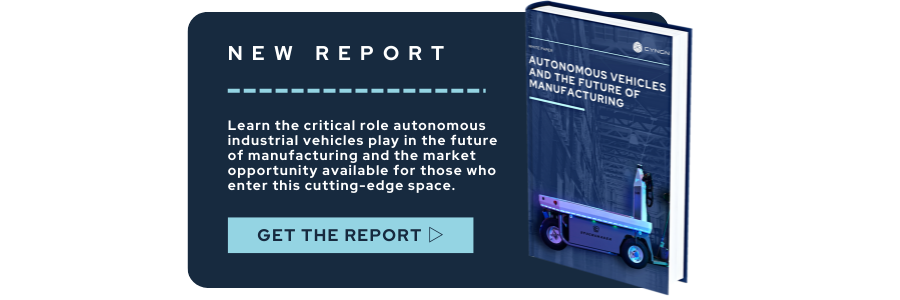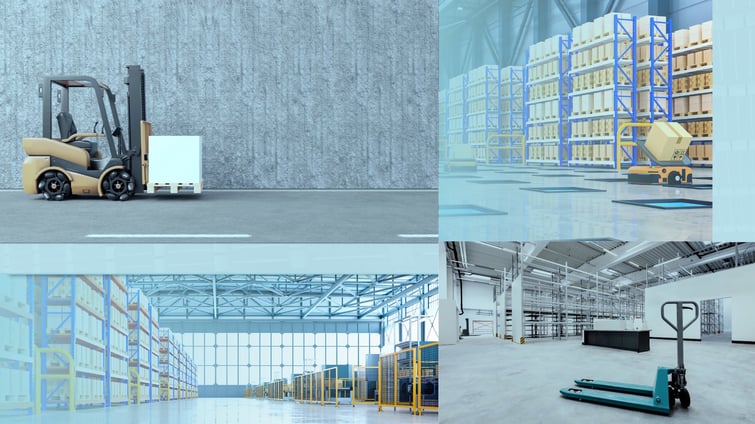By Melanie Stone
When considering whether their businesses are ready for autonomous vehicle adoption, most of our customers wonder what it will take for the technology to be ready, safe, and scalable for deployment. In other words, the evaluation is more about the technology than about identifying whether the technology will bring about meaningful solutions and optimizations at their organizations. Nonetheless, organizations may still be left wondering whether autonomous vehicle technology is even necessary.
In light of these questions, we've created a list of five qualifying questions that will help you better determine whether your business needs to make the shift.
1. Do you move goods across large distances?
One sign that your company may need to adopt autonomous vehicle solutions is if your team moves goods manually across large distances. As distance increases, you may find your employees spending more and more of their time driving, as opposed to performing other high-value tasks like picking and packing. Autonomous vehicles can support workers by carrying goods, guiding pickers, and handling multiple orders at once across these long routes. Working hand-in-hand with AV technology, workers can complete tasks more quickly or they can even be shifted over to higher-value tasks, boosting the productivity of your entire operation.
2. Do your routes include repetitive point-to-point transfers?
While the first question was about how far your vehicles travel, this question is more about how repetitive the routes are. For instance, a worker may have to move inventory from a bin at point A into a new location at point B or sort, categorize, and store a singular product, over and over again. Repetitive point-to-point transfers are not only time-consuming for your workers, they can also be boring. Boredom, of course, can lead to mistakes, accidents, and other safety concerns.
Obviously, autonomous vehicles don’t get bored, leaving workers to shift to other parts of your operation that may better keep them engaged.
 By contrast, some organizations operate their warehouses in ways that are always changing. For example, facilities that process a variety of different goods at different times of the year could be in this category. If your point-to-point routes are in constant flux, then you may find it's not quite the right time to bring AV technology to your organization.
By contrast, some organizations operate their warehouses in ways that are always changing. For example, facilities that process a variety of different goods at different times of the year could be in this category. If your point-to-point routes are in constant flux, then you may find it's not quite the right time to bring AV technology to your organization.
3. Do your employees use forklifts to move goods?
Forklifts are expensive vehicles that should almost exclusively be used to raise and lower goods. If your workers are using forklifts to move goods across the warehouse, they are essentially tapping an $80,000 tool to do a $15,000 job. Forklifts have other disadvantages. Compared to regular stock chasers, they are more expensive to maintain and are also more dangerous. The Occupational Safety and Health Administration (OSHA) estimates that 11% of all forklifts are involved in other types of injuries. Each year, forklifts are involved in roughly 85 fatal accidents.
The bottom line is that workers should be using forklifts for their intended purpose. If they aren’t, this could be a sign that your organization should consider adopting new workflows and tools. By implementing autonomous vehicle technology, human contact is reduced and workers avoid dangerous situations that arise in a dynamic environment like a warehouse.
4. Do you want to improve your forklift utilization rate?
When businesses bring in consultants to make their operations more efficient, one of the metrics that these “optimizers” look at is the Forklift Utilization Rate. The FUR is a measure of how efficiently you use your forklift assets. If your forklifts are in constant need of maintenance, this indicates that your fleet is overutilized. If you have forklifts that sit idle for weeks or your business is seasonal, then this could be a sign that your fleet is underutilized.
Switching to autonomous vehicles, particularly autonomous forklifts in this case, could resolve these efficiency issues. For one, AV technology doesn’t only enable vehicles to drive themselves, it also gives fleet managers the insights and analytics they need to make better use of their vehicle assets. More broadly, Cyngn offers is AV technology under the RaaS model, which means organizations can scale up their fleets as demand requires.
5. Do your employees use pallet jacks to move goods?
Like forklifts, pallet jacks that lift, pick, and identify goods, are associated with safety and efficiency limitations that constrain a warehouse. Pallet jacks cannot easily move in tight and narrow spaces, are limited in what they can lift, and create inefficient long routes for workers.
Therefore, if your employees use pallet jacks to move goods, then you may have a need to shift to autonomous vehicles to improve the productivity of these assets and your overall facility. While most pallet jacks can transport multi-sized pallets that are around 2,500 pounds across your warehouse, switching to autonomous vehicles can boost this number to as much as 6,000 pounds when towing.
A shift further eliminates long hauls and improves the put-away efficiency of lift operators. By removing the need for a human worker, safety concerns will in turn be reduced and a business will be able to boost the productivity of their operations.
Are you interested in learning more about how this technology can be carried out in your own environment? Cyngn’s industrial autonomous vehicle technology is available now — in the vehicles you already own. You can start the autonomy journey by visiting https://www.cyngn.com/contact-us.
